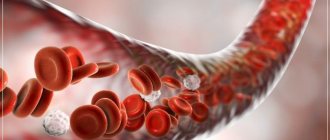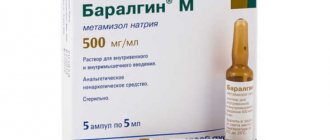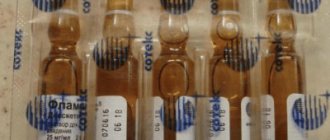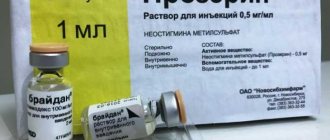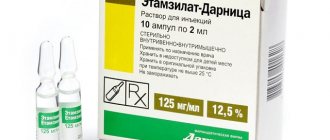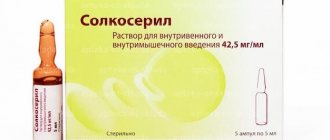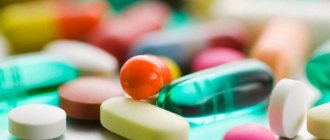- August 10, 2020
- Infectious
- Ulyana Romanova
"Oxamp-sodium" is a broad-spectrum penicillin antibiotic. It is quite often prescribed in medical practice. What does it contain? What diseases can this remedy help with? How to take it and can there be side effects? You will find out the answer to these and many other questions from the article.
Pharmacodynamics and pharmacokinetics
Oxamp-Sodium is a combined drug with antibacterial action.
An antibiotic from the group of penicillins of semi-synthetic origin, ampicillin exhibits bactericidal effectiveness by inhibiting the replication of the bacterial cell wall . Detrimental effect on gram-positive bacteria : Staphylococcus spp. (except those that produce penicillinase ), non-spore-forming bacteria (including Listeria monocytogenes), Streptococcus spp. (including Enterococcus spp.), as well as aerobic gram-negative bacteria : Shigella spp., Neisseria gonorrhoeae, Escherichia coli, Salmonella spp., Neisseria meningitidis, Bordetella pertussis, Haemophilus influenzae (some strains).
An antibiotic from the group of penicillins of semi-synthetic origin, oxacillin also inhibits the replication of the bacterial cell wall , but unlike ampicillin , it is resistant to the effects of penicillinase . Detrimental effect on gram-positive bacteria : Staphylococcus spp. (even those that produce penicillinase ), Corynebacterium diphtheriae, Streptococcus spp. (including Streptococcus pneumoniae), Bacillus anthracis, as well as gram-negative bacteria : Neisseria gonorrhoeae, anaerobic bacteria : spore-forming bacilli, Neisseria meningitidis; Actinomyces spp.
Fungi , a large number of gram-negative bacteria , viruses , rickettsia, and protozoa are considered resistant to the effects of the drug
This combination of active ingredients is appropriate, since oxacillin , by inhibiting penicillinase , thereby reduces the destruction of ampicillin , and therefore the spectrum of action of Oxamp-Sodium expands.
Oxamp-Sodium saturates various organs and tissues well. For both antibiotics (with intramuscular use), plasma TCmax is at the level of 30-60 minutes. T1/2 fluctuates around 1-2 hours.
The drug is excreted mainly through urine, partly through bile.
No accumulation was observed upon repeated use.
Impact on the body
"Oxamp-sodium" is a combined antibacterial drug. Oxacillin and ampicillin included in the composition belong to the group of semi-synthetic penicillins. These substances have a bactericidal effect, suppressing the synthesis of cell walls of parasitic microorganisms.
The medication combines oxacillin and ampicillin very rationally. After all, the first, inhibiting the activity of penicillinase, reduces the destruction of the second. And in this situation, the range of effects of the drug turns out to be much wider.
But, nevertheless, you need to understand that injections with Oxamp-sodium are not a panacea for all diseases caused by parasitic bacteria. There are microorganisms that are resistant to this medication. That is why, before prescribing antibiotics, doctors carefully study the patient’s tests in order to prescribe an effective and safe medicine - one that will definitely affect the causative agent of the disease.
Indications for use
Inflammatory infections due to exposure to sensitive pathogens:
- sinusitis;
- otitis media;
- tonsillitis;
- bronchitis;
- cholangitis;
- pneumonia;
- cholecystitis;
- pyelitis;
- pyelonephritis;
- cystitis;
- gonorrhea;
- urethritis;
- cervicitis;
- impetigo;
- erysipelas;
- re-infected dermatoses , etc.
Serious infections:
- postpartum infection;
- sepsis;
- meningitis;
- endocarditis.
Infections of newborns (danger of formation of aspiration pneumonia ; respiratory failure, if necessary, use of resuscitation measures; infection of amniotic fluid ); prevention of complications in the postoperative period (including against the background of immunodeficiency ).
Similar drugs:
- Augmentin Oral tablets
- Augmentin Powder for suspension for oral administration
- Orcipol (ORCIPOL) Oral tablets
- Dioxydin Mouth rinse solution
- Cifran OD Oral tablets
- Gentamicin (Gentamicin) Solution for injection
- Amoxicillin Sandoz Tablets
- Augmentin ES Powder for oral solution
- Sumamed Aerosol
- Hiconcil Capsule
** The Drug Directory is intended for informational purposes only. For more complete information, please refer to the manufacturer's instructions. Do not self-medicate; Before starting to use Oxamp, you should consult a doctor. EUROLAB is not responsible for the consequences caused by the use of information posted on the portal. Any information on the site does not replace medical advice and cannot serve as a guarantee of the positive effect of the drug.
Are you interested in the drug Oxamp? Do you want to know more detailed information or do you need a doctor's examination? Or do you need an inspection? You can make an appointment with a doctor - the Euro lab is always at your service! The best doctors will examine you, advise you, provide the necessary assistance and make a diagnosis. You can also call a doctor at home . Euro lab clinic is open for you around the clock.
** Attention! The information presented in this medication guide is intended for medical professionals and should not be used as a basis for self-medication. The description of the drug Oxamp is provided for informational purposes and is not intended for prescribing treatment without the participation of a doctor. Patients need to consult a specialist!
If you are interested in any other drugs and medications, their descriptions and instructions for use, information about the composition and form of release, indications for use and side effects, methods of use, prices and reviews of drugs, or you have any other questions and suggestions - write to us, we will definitely try to help you.
Contraindications
The use of Oxamp-Sodium is contraindicated in case of hypersensitivity to its ingredients, lymphocytic leukemia and infectious mononucleosis .
Prescribe the drug with caution when:
- history of bleeding
- kidney pathologies;
- history of allergic manifestations and/or bronchial asthma ;
- enterocolitis , with previous antibiotic therapy ;
- as well as children whose mothers have a history of hypersensitivity to penicillins .
Composition and price
“Oxamp-sodium” is produced in bottles that contain powder intended for preparing a solution, which is subsequently used for intramuscular administration.
This mass is white, sometimes yellowish, and hygroscopic. One bottle, which costs an average of 20-35 rubles, contains ampicillin (667 mg) and oxacillin (333 mg).
The medication is relatively rare and serious, and therefore is available only by prescription.
Side effects
Allergic manifestations:
- peeling and itching of the skin;
- hyperemia;
- hives;
- rhinitis;
- angioedema;
- conjunctivitis;
- fever;
- eosinophilia;
- arthralgia;
- maculopapular and erythematous rash ;
- erythema multiforme;
- exfoliative dermatitis;
- serum sickness type reactions ;
- “ampicillin” rash (most often disappearing on its own);
- anaphylactic shock (very rare).
Gastrointestinal tract:
- manifestations of dysbacteriosis ;
- diarrhea (diarrhea);
- feeling of nausea or discomfort;
- change in taste sensations;
- vomit;
- increased activity of liver enzymes (moderate);
- pseudomembranous colitis (rare).
Local manifestations:
- pain at the injection site;
- phlebitis with intravenous administration;
- infiltration with intramuscular injections.
Other:
- proteinuria;
- interstitial nephritis ;
- anemia;
- nephropathy;
- leukopenia;
- superinfection;
- neutropenia;
- vaginal candidiasis;
- hematuria.
Indications
The spectrum of antimicrobial effects of the drug has been expanded due to the combination of two powerful antibiotics. Therefore, Oxamp is often used during infectious and inflammatory processes of various localizations, which are caused by pathogens susceptible to the drug.
Indications for use of Oxamp:
- Diseases of the ENT organs that have a bacterial etiology - otitis media, tonsillitis, inflammatory process in the paranasal sinuses.
- Respiratory diseases - pneumonia, pleurisy, bronchiectasis and bronchitis.
- Inflammatory process in the reproductive system - urethritis, kidneys, cervical canal, bladder.
- Bacterial lesions of the skin and nearby tissues - dermatoses, infected wounds, erysipelas, impetigo, burn disease.
- Local and generalized inflammation - sepsis, otitis media, endocarditis.
- Infections of the bile ducts and gastrointestinal tract - dysentery, salmonellosis, cholangitis, cholecystitis.
- Injections are often used as prophylaxis in surgery, as well as to prevent pneumonia in infants, especially when the mother’s amniotic fluid becomes infected.
Instructions for use Oksamp-Sodium (Method and dosage)
Oxamp injections, instructions for use suggest intramuscular or intravenous injection (drip or stream).
The dosages of the drug given below are a combination of doses of its active ingredients in a 2:1 ratio. That is, when prescribing 1000 mg of Oxamp-Sodium, ampicillin / oxacillin in the proportion of 667.0/333.0 mg (one gram).
For the treatment of patients over 14 years of age, the daily dose is usually 3000-6000 mg.
Premature babies, newborns and children up to one year old . generally prescribed 100-200 mg/kg per 24 hours. The daily dosage for children 1-6 years old is 100 mg/kg; for children 7-14 years old - 50 mg/kg.
It is recommended to divide the administration into 3-4 times a day, with an interval of 6-8 hours.
If necessary, it is possible to double the indicated dosages.
The duration of use is most often 5-10 days, with possible use of the drug (for severe infections) from 2-3 weeks to several months.
For intramuscular injections, 10 ml of water d/in is used as a solvent.
For intravenous administration (in a stream for 2-3 minutes), a single dosage should be diluted in 10-15 ml of intravenous water or 0.9% sodium chloride .
For intravenous administration (drip 60-80 drops/min), an adult single dosage is diluted in 100-200 ml of 5% glucose or 0.9% sodium chloride . The children's dosage is recommended to be diluted in 30-100 ml of 5% or 10% glucose .
IV infusions are carried out for 5-7 days, followed, if necessary, by switching to IM injections.
Prepared solutions should be used immediately.
Pharmacokinetics
How the body absorbs the drug is described in detail in the instructions for use of Oksamp. Injections are usually given into the muscle, and therefore the maximum concentration of active substances is achieved in approximately 30-60 minutes. The half-life is 1-2 hours. The medicine penetrates well into tissues and organs.
However, sometimes injections with Oxamp sodium are also given into a vein. In this case, the concentration is achieved within 5-10 minutes, and it is much higher than that which is recorded after injection into the muscle. That is why the first option of administering the medication is preferable.
Both components of the antibiotic "Oxamp-sodium" are excreted by the kidneys and, in small quantities, by bile. It is important to note that they do not accumulate with repeated administrations.
Overdose
In case of an overdose of Oxamp-Sodium, the following were observed: headaches , nausea (with or without vomiting), tremors , diarrhea , convulsions .
Symptomatic treatment is indicated, with possible, if necessary, hemodialysis .
Oxamp
Oksamp is an antibacterial combined bactericidal agent, part of the group of semisynthetic penicillins.
Release form and composition
Oksamp is produced in the form of capsules: gelatin, white, containing white granules with a yellowish tint (10 pieces in a strip pack, 1 or 2 packs in a cardboard box).
Composition of 1 capsule:
- Active ingredients: oxacillin sodium (in terms of oxacillin) – 125 mg; ampicillin trihydrate (in terms of ampicillin) – 125 mg;
- Additional components: sucrose (powdered sugar), potato starch;
- Capsule shell: methyl parahydroxybenzoate, titanium dioxide, acetic acid, propyl parahydroxybenzoate, gelatin.
Directions for use and dosage
Oxamp is taken orally.
A single dose for adolescents over 14 years of age and adults is 0.5-1 g with a frequency of administration 4-6 times a day, the daily dose should not exceed 2-4 g.
Children 3-7 years old are recommended to take 0.1 g per 1 kg of body weight per day, children and adolescents 7-14 years old - 0.05 g per 1 kg of body weight, in 4-6 doses. The course of therapy can vary from 5 to 14 days.
Side effects
- Gastrointestinal tract: change in taste, diarrhea, vomiting, dysbacteriosis, nausea; rarely – pseudomembranous enterocolitis;
- Allergic reactions: conjunctivitis, rhinitis, angioedema, skin hyperemia, urticaria; eosinophilia, arthralgia, fever; in some cases - anaphylactic shock;
- Hematopoietic organs: anemia, neutropenia, leukopenia;
- Other: superinfection.
A sign of a drug overdose is an increase in the severity of adverse reactions. In such a condition, activated charcoal, gastric lavage, and symptomatic therapy are prescribed.
special instructions
With a long course, the functional state of the kidneys, liver and hematopoietic organs should be monitored.
In case of possible development of superinfection (caused by the growth of pathogenic microflora insensitive to oxacillin and ampicillin), appropriate changes must be made to the antibacterial treatment regimen.
If signs of anaphylactic shock occur, antihistamines, glucocorticosteroids (prednisolone or hydrocortisone) and epinephrine must be immediately administered, and artificial ventilation is performed if necessary.
Persons with hypersensitivity to penicillins should beware of possible cross-allergic reactions with cephalosporin antibiotics.
Taking large doses of the drug in the presence of renal failure can cause toxic effects on the central nervous system.
Drug interactions
Please note that when combined with Oxamp:
- Aminoglycosides, laxatives, glucosamine, antacids (when administered enterally) - reduce and slow down absorption, and ascorbic acid - increases;
- Rifampicin, vancomycin, cycloserine, cephalosporins, aminoglycosides (bactericidal antibiotics) - exhibit a synergistic effect;
- Probenecid, nonsteroidal anti-inflammatory drugs, phenylbutazone, allopurinol, diuretics and other drugs that block tubular secretion - increasing the level of the drug in the blood, increase the threat of toxic effects;
- Sulfonamides, tetracyclines, lincosamides, chloramphenicol, macrolides (bacteriostatic drugs) - have an antagonistic effect;
- Allopurinol – increases the risk of skin rashes.
The effect of Oxamp on concomitantly used substances/drugs:
- Indirect anticoagulants - enhances their effect (inhibits intestinal microflora, reduces the prothrombin index and the production of vitamin K);
- Estrogen-containing oral contraceptives, as well as drugs whose metabolism produces para-aminobenzoic acid, reduce their effectiveness;
- Ethinyl estradiol weakens its effect and increases the risk of breakthrough bleeding.
Terms and conditions of storage
Store out of reach of children and protected from moisture and light, at a temperature not exceeding 20 °C.
Shelf life – 2 years.
Source: https://medlib.net/oksamp.html
Interaction
The combined use of Oxamp-Sodium and aminoglycosides .
Oxamp-Sodium enhances the effect of indirect anticoagulants (inhibiting intestinal microflora, reducing the prothrombin index and the production of vitamin K), reduces the effectiveness of oral contraceptives (estrogen-containing), drugs that promote the production of para-aminobenzoic acid, as well as ethinyl estradiol (increasing the risk of breakthrough bleeding ).
Bactericidal antibiotics (for example, Rifampicin , aminoglycosides, Vancomycin , Cycloserine , cephalosporins) have a synergistic effect on Oxamp-Sodium, and bacteriostatic drugs (tetracyclines, sulfonamides , macrolides, lincosamides, chloramphenicol ) have an antagonistic effect.
Parallel use with Allopurinol increases the possibility of a rash on the skin .
NSAIDs , diuretics, Oxyphenbutazone , Allopurinol , Phenylbutazone and other tubular secretion blockers increase the plasma content of the drug.
Oxamp-Sodium increases the toxic effects of Methotrexate .
Side effects
The toxicity of Oxamp is low, but during hypersensitivity to this drug allergic manifestations are possible. They are expressed by skin rash, urticaria, conjunctivitis, runny nose, anaphylactic shock, Quincke's edema, and painful sensations in the joints.
In some cases, dysbiosis develops, as well as digestive and dyspeptic disorders.
During pregnancy, the active components of the drug pass through the placenta, but do not have a negative effect on the fetus. However, this drug can be used during pregnancy only for exceptional indications. When using an antibiotic, it is better to temporarily interrupt lactation.
If we consider compatibility with alcoholic beverages, then any antibiotics, except for some drugs for external use, are incompatible with alcohol.
An organism that is weakened by infection may react inadequately to alcohol, resulting in severe side effects. Liver cells die, which neutralize both alcohol and medicine.
Also, the drug is quickly eliminated by the kidneys and cannot cope with the infection due to increased urination.
special instructions
When using a treatment regimen with prolonged use of the drug, you should monitor the functional state of the kidneys, hematopoietic organs and liver.
If the development of symptoms of anaphylactic shock , it is necessary to take urgent measures to remove the patient from this condition, namely: the administration of Adrenaline ( epinephrine ), antihistamines, glucocorticoids ( Prednisolone , Hydrocortisone ), and, if necessary, ventilation.
If there are signs of superinfection (due to the growth of microflora insensitive to the drug), antibiotic therapy .
In cases of hypersensitivity to penicillins, allergic cross-reactions with cephalosporin antibiotics .
Patients with kidney pathologies taking high doses of Oxamp-Sodium are at risk of toxic effects on the central nervous system.
Release form and composition
At the pharmacy you can buy a domestically produced antibiotic, which is manufactured by the pharmaceutical company Sintez OJSC. The company produces the product in two dosage forms:
- powder for the production of infusion or injection composition. The powder is packaged in glass flasks of 0.5 g, where 0.3335 g is ampicillin, and 0.1655 is oxacillin.
- Capsules for oral administration, each containing 130 mg of active elements. Capsules are packed in 20 pcs. in glass jars.
The approximate cost of one capsule is no more than 15 rubles, the price of Oxamp in a pack of 20 bottles will cost approximately 60-70 rubles. The choice of dosage form remains with the doctor.
The antibiotic Oxamp contains two main active ingredients. One active component is oxacillin , the second is ampicillin . This combination of two strong penicillin antibiotics significantly increases the range of bactericidal effects of the drug.
The active ingredients, by suppressing the production of bacterial cell walls, destroy the bulk of pathogens:
- Oxacillin destroys spore-forming bacilli, actinomycetes, diphtheria bacilli, gram-negative gonococci producing penicillinase Staphylococus spp., Corynebacterium diphtheriae, Bacillus anthracis, as well as streptococci.
- Ampicillin eliminates gram-negative aerobes, the Shigella family, salmonella, Escherichia coli and Haemophilus influenzae, strains of gram-positive staphylococci, the causative agent of whooping cough Bordetella pertussis, non-spore-forming bacteria, enterococci and streptococci.
The active substances complement each other, since ampicillin is active against most gram-negative pathogens, and oxacillin is resistant to the destructive effects of penicillinase.
As a result, the spectrum of antimicrobial effects increases, allowing the drug to effectively treat many inflammatory pathologies.
Analogs
Level 4 ATX code matches:
Arlet
Ecoclave
Panclave
Amoxiclav
Oxamp
Amoxicillin + Clavulanic acid
Augmentin
Ampisid
Amoxil K 625
Flemoklav Solutab
Sultasin
- Bactoclav;
- Amoxiclav;
- Augmentin;
- Klamosar;
- Ampisid;
- Honeyclave;
- Sulbacin;
- Flemoklav Solutab;
- Panclave 2X;
- Amovycombe , etc.
Oxamp during pregnancy
During pregnancy, the use of Oxamp is permitted, but with caution, according to strict medical indications and under careful monitoring of the mother and fetal development. During lactation (breastfeeding), the use of the drug is prohibited. Both of its active components pass into breast milk, so they can enter the baby’s body and cause negative consequences.
For children
The drug Oxamp-Sodium, as directed by a pediatrician and in the dosages recommended above, can be prescribed to children from the moment of birth.
How to dilute Oxamp for injections for children
According to the instructions, for intramuscular injections of the drug, its recommended dose, taking into account the weight and age of the child, should be diluted in 10 ml of water daily . But some doctors, in order to anesthetize the injection itself, advise adding Lidocaine or Novocaine , for example in a 1:1 ratio with water (5ml:5ml) or in other proportions. Let us remind you that these drugs themselves can cause various allergic manifestations , including severe ones, so they should be prescribed exclusively by a pediatrician.
Reviews
Doctors have a good opinion about this drug. In the reviews left about Oksamp-sodium, experts describe it as a good and effective combined antibiotic, which, with the correct dosage selection and subsequent completion of the full course, ensures complete recovery.
People who have had the opportunity to give themselves such injections agree with the opinion of doctors. They note that the condition improves quickly; already on the second day after the start of treatment, the temperature normalizes, the symptoms soften, and the state of health stabilizes. And if you start therapy on time, then some signs do not have time to appear at all.
Plus, “Oxamp-sodium” has a very mild effect, and therefore does not cause global harm to health, like some other antibiotics.
